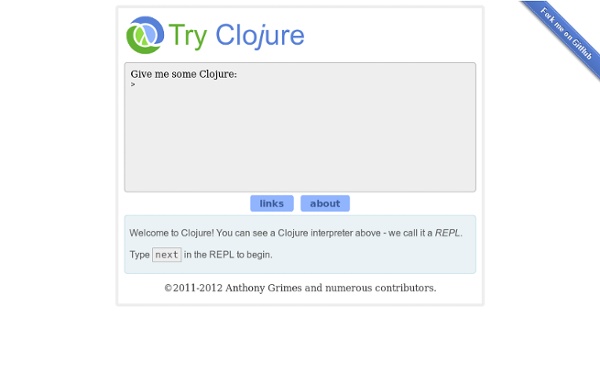



functional-koans/clojure-koans Clojure Tutorial For the Non-Lisp Programmer | Moxley Stratton I intend to keep this tutorial as accurate and up-to-date as possible. If you have any suggestions for changes, please leave a comment at the bottom of this page. Clojure is a functional lisp dialect that uses the Java Virtual Runtime as its platform. The language home page is at Table of Contents A Quick Comparison In C-like languages, a function call might look something like this: In Clojure, the same function call would look like this: Here, Clojure’s syntax differs in these ways: The opening parenthesis is to the left of the function name.There are no commas delimiting the function parameters.By convention, words in a function name are separated by dashes. There’s not a huge difference. Here’s how adding two values might look in a C-like language: And here’s how it would look in Clojure: In C, the plus operator goes in between the two operands. Installing Clojure A fast and easy way to get started with Clojure is to download and run Clooj. Numbers Booleans Nil Strings Symbols
Emerick C., Carper B., Grand C. - Clojure